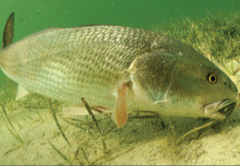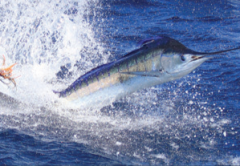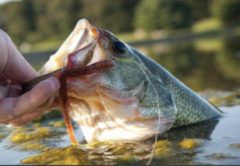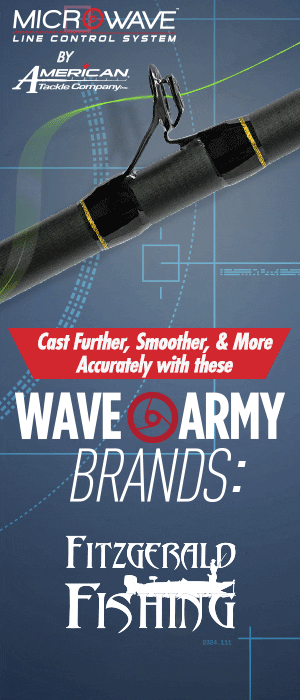As we approach the backside of summer on Florida’s east central coast, shorter days, prevailing easterly breezes, and longer cooler nights signal the approach of fall. All these signs are natural indicators signaling prey and predator alike that spawning season is over and its once again time to fatten up and return south to warmer waters.
September on the Space Coast serves as the most anticipated and predictable time of the year for anglers looking to find fish bunched up and feeding happily on finger mullet during their migration south. Silver mullet, snook, and tarpon are just a few of the tropical species of fish migrating north up the Atlantic coast in the spring, spend their summers in the rich estuarine waters of the eastern seaboard fattening up and spawning all summer long, and then forming up for their mass migration south in the fall.
It’s hard to predict the magnitude and duration of the mullet run, but since the elimination of gillnets by Florida voters, their populations have exploded. As the baitfish and predators gather and begin to move south along the beaches and through the lagoons, the moon and tides cause them to move in pulses rather than a continuous flow. Therefore, locating schooling baitfish is the key to catching fish. One day a particular location will be loaded with bait and fish, and the next day they will be gone. When searching for schools of bait fish, focus your attention on bait schools bunched up and under pressure in the shallow water and along the beach with your natural indicators being diving pelicans, terns and seagulls, wading shore birds, showering mullet schools and busting fish.
Mullet have an arduous life cycle beginning in the fall of the year when the sexually mature adults (roe mullet) gather in large schools, migrate south and then offshore to their spawning grounds along the Atlantic continental shelf. These aggregations remain in the spawning area from late October through January where the females release over a million eggs on multiple occasions. Once fertilized, the eggs hatch within a few days and the hatchlings are dispersed by the Gulf Stream up the eastern coastline from Florida to North Carolina and beyond. After spending the spring and summer in the coastal estuaries, the adolescent mullet exits their summertime estuarine home on their mass exodus south to the warm waters of south Florida.
On the Indian River, Mosquito, and Banana River Lagoons, look for slot redfish and sea trout to be shadowing schools of finger mullet working south through the estuaries, and for the larger redfish and sea trout staging in the deeper ambush locations like causeways, bridges, and points, were schooling baitfish are forced to leave the safety of the shallow flats. With the hungry predators focusing their attention on finger mullet, anglers should be using both top-water and soft plastic lures matching the main food source. For the deep-water situation, the D.O.A. Bait Buster works well, and try the new D.O.A. 4-inch shad around schools of large mullet in shallow water. Mullet are vegetarians, so as they move and feed, they are often shadowed by redfish and sea trout feeding on small baitfish, shrimp and crabs flushed out by the larger mullet moving through the grass. If you are fishing up shallow, tie on your favorite top-water plug and standby for some explosive action.
In and around the beaches, and inlets look for flounder, snook, jack crevelle, bluefish, Spanish mackerel, and oversized redfish ambushing migrating mullet along the beaches and jetties. The snook run has already started along the beach and will begin to pick up substantially just in time for the opening of snook season on September 1st. Remember, snook regulations are in effect with a one snook per day bag limit and a 28 to 32-inch slot on Florida’s east coast. Also watch for the larger redfish to begin forming up just outside inlets busting on schools of finger mullet forced away from the safety of the shoreline as they attempt to cross the open water or the inlet. All in all, time is of the essence regardless of where and how you fish the mullet run, so gear up and hit the water before you miss the boat.
Snook from the Beach
The arrival of finger mullet is the surf is first indicator that the time is right, and like any other bait run, matching the hatch is important when targeting beach bombers. It’s significant to note snook are primarily nocturnal feeders, so fishing at dusk and first light are the most productive times. Staging in the trough between the beach and the first sandbar, snook will move into wash of the shore break to ambush baitfish. Consequently, a fast action medium heavy spinning rod equipped with a 4000 series spinning reel sufficient tackle, because there is no need to cast beyond the first sandbar. As for line and leader, I suggest a minimum of 150 yards of 20-pound braided line with a 40-to-50-pound fluorocarbon leader to counter the sharpness of a snook’s gill plates.
Lure Fishing: When selecting a lure or fly, remember to match the hatch in size and color. It is also important when casting lures or flies to work the shore wash by casting parallel to the beach, as most snook are caught less than 20 feet from the water’s edge. Several lures that have worked well for me in the past are the Rapala X-Rap in silver and olive-green colors, or DOA’s Shallow Running Baitbuster, 5.5” Big Fish Lure, Swimming Mullet or Terror Eyes. As stated earlier, wade out about knee deep, cast parallel to the beach, and use a steady slow retrieval as though your lure is a finger mullet swimming along the edge.
Bait Fishing: In many cases when fishing for beach snook, nothing beats a freshly caught live finger mullet, so be sure to bring your cast net, bait bucket and aerator. For my live bait rig, I start by tying on about 30 inches of 40-pound fluorocarbon leader. Next, I slide on a one-ounce barrel sinker and tie on a #2 circle hook. I then finish the rig by adding a split shot to the line about 8 inches from the hook. This rig will allow the mullet to free swim, and as the tide carries your bait down current along the beach, you can walk along with it as the sinker slowly rolls down the beach, keeping it in the strike zone longer.












